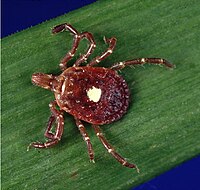
Photo from wikipedia
Abstract A new sensor placement problem is formulated to cover two objectives of: (1) assuring quality of water delivered to consumers; and (2) detection of any contamination event at the… Click to show full abstract
Abstract A new sensor placement problem is formulated to cover two objectives of: (1) assuring quality of water delivered to consumers; and (2) detection of any contamination event at the earliest so as to minimize its consequences, through maximization of: (1) demand coverage; and (2) time-constrained detection likelihood for pressure deficient networks. The network may become pressure-deficient owing to continued use of water distribution network beyond its design life. The two objectives are combined using weights. Genetic algorithm is used to obtain optimum sensor locations. The methodology is applied to a pressure- deficient network in the Dharampeth zone of Nagpur city (India). The pressure- dependent analysis is carried out using WaterGem v8i to simulate the system hydraulics. Performance objectives are evaluated considering the availability of flows at nodes and velocity of flow in pipes under pressure-deficient conditions. Comparison of optimal sensor network design is carried out with that obtained by demand-dependent analysis.
Journal Title: Urban Water Journal
Year Published: 2017
Link to full text (if available)
Share on Social Media: Sign Up to like & get
recommendations!